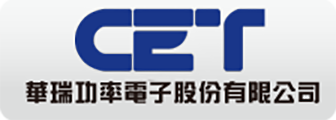电容阻抗
电容阻抗是指电容器对交流电压或电流的阻抗特性,通常用Z表示。它与电容器的电容值、频率以及外加电压等因素有关。当交流信号作用于电容器时,电容器内部会形成一个储存电荷的能量场,导致电压和电流之间产生相位差。这种相位差导致电容器表现出一种阻抗,称为电容阻抗。
1. 电容阻抗公式:电容阻抗Zc可由以下公式计算得出:Zc = 1 / (jωC),其中j是虚数单位,ω是角频率,C是电容值。
2. 频率特性:电容阻抗随着频率的变化而变化,当频率增加时,电容阻抗减小;反之,当频率降低时,电容阻抗增大。
3. 相位响应:电容阻抗导致输入电压和输出电流之间存在90度的相位差。这种相位差是由于电荷储存在电场中导致的。
1. 电子电路设计:在电子电路设计中,电容阻抗是设计滤波器、耦合器和调谐电路等的重要参数,通过调整电容值和频率可以实现所需的电气特性。
2. 传感器技术:电容阻抗在传感器技术中扮演重要角色,如电容式接近传感器、触摸屏等,利用电容阻抗的变化实现精准的位置检测和触摸控制。
优势
高频率响应快:电容阻抗具有快速的高频率响应能力,适用于需要快速信号传输和处理的应用领域。
稳定性:电容器在设计和制造过程中具有较好的稳定性,能够保持一定的电容值和阻抗特性,在电路设计中表现可靠。
简单结构:电容器作为被动元件,结构相对简单,易于集成到电子设备中,并且成本相对较低,适用于大规模生产。
功率损耗小:由于电容器不会导致能量损失,其功率损耗较小,有利于提高系统的能效性能。
有效储存电荷:电容器能够有效地储存电荷,提供电能存储和释放功能,在电子电路中起到重要作用。
用途广泛:电容阻抗的应用范围广泛,涵盖了电子工程、通信技术、传感器技术以及医疗领域等多个领域,具有非常大的市场需求。
限制
频率依赖性:电容阻抗的大小与频率密切相关,频率变化可能导致阻抗值的变化,需要根据具体应用频率进行设计和优化。
温度敏感性:温度变化可能影响电容器的电容值和阻抗特性,尤其在极端温度条件下,容易引起性能波动或失效。
封装困难:对于某些高频率或高精度要求的电路,对电容器的封装和布局要求比较严格,容易受到外部干扰影响。
干扰敏感性:在高频率或复杂环境下,电容器易受到外部干扰的影响,需要采取屏蔽措施或设计抑制干扰的电路。
精确度要求高:对于一些需要高精度的应用,如精密仪器、仪表等,电容阻抗的稳定性和准确性要求较高,这可能增加设计和制造成本。
容量限制:电容器的容量值受到材料和制造工艺等因素的限制,对于超大容量或微型化要求的应用存在一定挑战。
在线留言询价
- 一周热料
- 紧缺物料秒杀
| 型号 | 品牌 | 询价 |
|---|---|---|
| MC33074DR2G | onsemi | |
| TL431ACLPR | Texas Instruments | |
| BD71847AMWV-E2 | ROHM Semiconductor | |
| CDZVT2R20B | ROHM Semiconductor | |
| RB751G-40T2R | ROHM Semiconductor |
| 型号 | 品牌 | 抢购 |
|---|---|---|
| BP3621 | ROHM Semiconductor | |
| IPZ40N04S5L4R8ATMA1 | Infineon Technologies | |
| BU33JA2MNVX-CTL | ROHM Semiconductor | |
| STM32F429IGT6 | STMicroelectronics | |
| TPS63050YFFR | Texas Instruments | |
| ESR03EZPJ151 | ROHM Semiconductor |
AMEYA360公众号二维码
识别二维码,即可关注
























